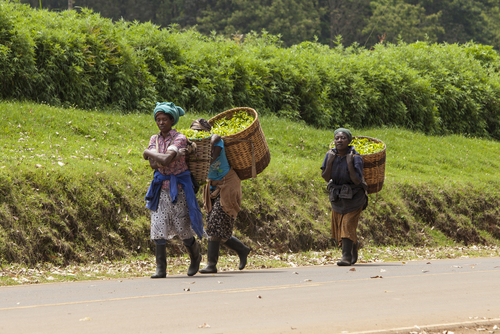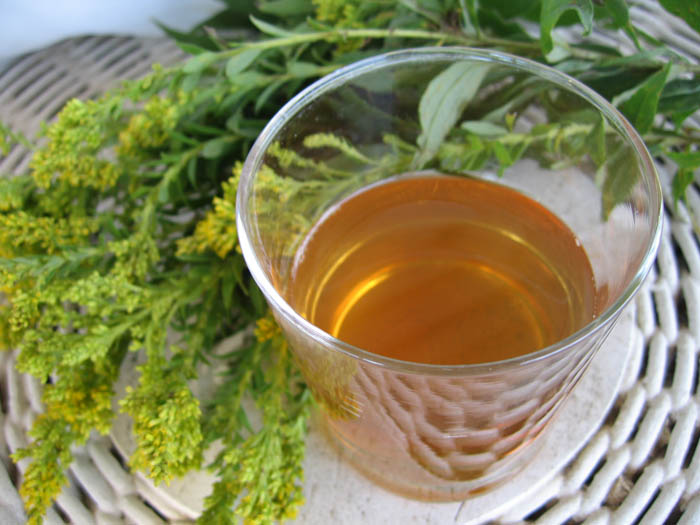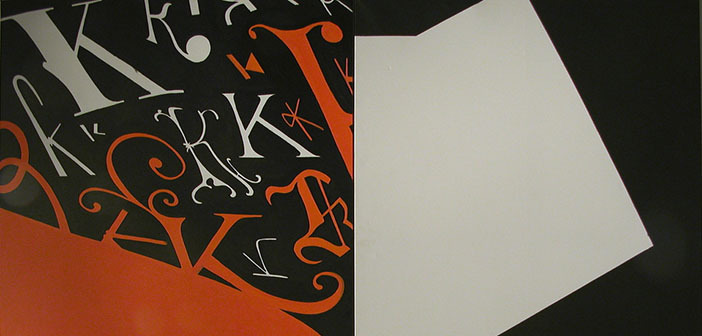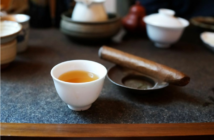Tea terminology can be mind-bogglingly complex. Which is why The Daily Tea is bringing you Tea A-Z, a guide to deciphering both common and completely bewildering concepts from the world of tea. Let’s dive in!
Kandy
 Kandy, the ancient capital of Ceylon (now Sri Lanka) is believed to be the birthplace of Sri Lankan tea production. The terroir of this region makes it a natural home for tea production. The tea growing district of Kandy consists of several areas including Hantane, Gampola and Hewaheta. Today, most of the tea that is grown in Kandy is used for blending.
Kandy, the ancient capital of Ceylon (now Sri Lanka) is believed to be the birthplace of Sri Lankan tea production. The terroir of this region makes it a natural home for tea production. The tea growing district of Kandy consists of several areas including Hantane, Gampola and Hewaheta. Today, most of the tea that is grown in Kandy is used for blending.
Kemmun
 A premium fine grade black tea from China, this tea is usually hand rolled and then fired.
A premium fine grade black tea from China, this tea is usually hand rolled and then fired.
Kenya
 This African country is one of the largest exporters of CTC (cut tear curl) black tea. Grown throughout the beautiful Rift Valley, tea has become the main source of income for hundreds of smallholder farmers. Today, Kenya is known for its bolder black tea commonly used to add both flavor and color to common breakfast blends. Orthodox tea, although still limited, is beginning to be promoted in this region, providing an additional source of revenue for these family farms.
This African country is one of the largest exporters of CTC (cut tear curl) black tea. Grown throughout the beautiful Rift Valley, tea has become the main source of income for hundreds of smallholder farmers. Today, Kenya is known for its bolder black tea commonly used to add both flavor and color to common breakfast blends. Orthodox tea, although still limited, is beginning to be promoted in this region, providing an additional source of revenue for these family farms.
Kissa Yojoki
 Written in 1211 by Elsai, this two volume Japanese book was created after his last visit to China. The title, Kissa Yojoki, is loosely translated to: How to Stay Healthy by Drinking Tea. Yes, over 800 years ago, a health manual was created touting the incredible properties in Camellia Sinensis. Elsai believed that tea could help every organ in the body, particularly the heart.
Written in 1211 by Elsai, this two volume Japanese book was created after his last visit to China. The title, Kissa Yojoki, is loosely translated to: How to Stay Healthy by Drinking Tea. Yes, over 800 years ago, a health manual was created touting the incredible properties in Camellia Sinensis. Elsai believed that tea could help every organ in the body, particularly the heart.
Kukicha
 Sometimes called winter tea, as it is picked during a tea’s dormant period, this tea is made from the twigs, branches and sometimes a few stray leaves and then dry roasted over a fire.
Sometimes called winter tea, as it is picked during a tea’s dormant period, this tea is made from the twigs, branches and sometimes a few stray leaves and then dry roasted over a fire.
Kombucha
 Created by fermenting sweet tea with the active, sugar-loving SCOBY (symbiotic culture of friendly bacteria and yeast) kombucha contains probiotics and vitamins (think of it as the yogurt of the tea world).
Created by fermenting sweet tea with the active, sugar-loving SCOBY (symbiotic culture of friendly bacteria and yeast) kombucha contains probiotics and vitamins (think of it as the yogurt of the tea world).
Sources:
Sri Lanka Tea Board
Kandy’s Tea plantations turn into housing land




